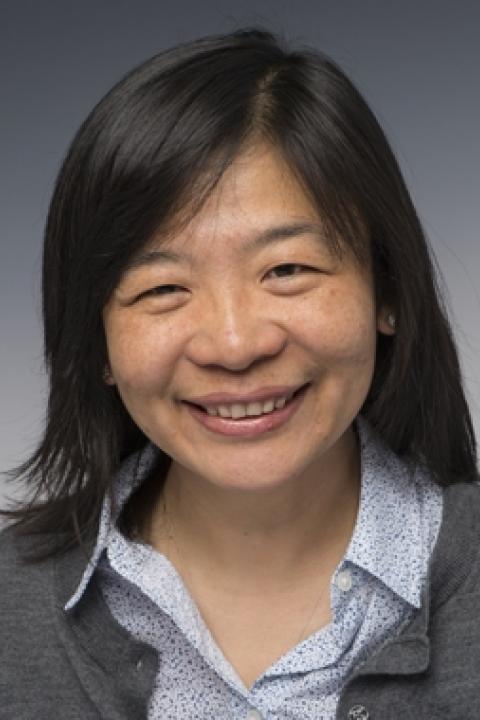
As our understanding on the cell deepens, we appreciate more and more the sophisticated orchestration of cellular processes, where exchanges of protein components, addition and removal of posttranslational modifications take place in a highly ordered, dynamic manner. Since modern mass spectrometry excels in both characterization of protein complexes and elucidation of posttranslational modifications, we see a great opportunity to use and develop mass spectrometric techniques to shed light on those complex, dynamic cellular processes. In particular, we are interested in the molecular recognition among proteins in protein assemblies, the nature and function of posttranslational modifications in chromatin.<br><br>Most cellular processes are carried out by protein assemblies, where strong protein interactions constitute stable architecture of the assemblies to ensure efficiency; while weak protein interactions regulate transient function of the assemblies to achieve plasticity. Conceivably, the molecular recognition among proteins dictates the organization, function and modulation of protein assemblies. We are interested in structural characterization of protein assemblies with an integrated chemical cross-linking and mass spectrometric approach. Chemical cross-linking of protein assemblies, followed by mass spectrometric identification of the cross-linked species provides valuable spatial constrains that can be used in conjunction with computational modeling to reveal surfaces involved in protein interactions. Since chemical cross-linking can covalently ‘lock’ various conformers in the conformational equilibrium of protein assemblies, we have used this approach to elucidate the structural dynamics of protein complexes. In addition, we are interested in developing mass spectrometric techniques to facilitate sensitive detection and confident identification of the cross-linked species. Thus far, we have developed tools and strategies that have proved robust for most binary complexes we have attempted. Equipped with these tools, we are expanding to the structural characterization of multi-subunit protein assemblies, a challenging domain yet to be tackled by this promising, integrative approach.<br><br>The largest macromolecular assembly inside the cell might be chromatin, though little is known about its spatial organization. The function of structure alterations in chromatin is prominently manifested during the development of multi-cellular organisms, in which a variety of phenotypes are achieved from a singular genotype. As an epigenetic regulation mechanism, posttranslational modification of chromatin proteins can either recruit or exclude the binding of effector proteins to indirectly, or directly modulate chromatin structure. The ability for sensitive detection and specific structural elucidation, as well as the compatibility with upstream biochemical purification has made mass spectrometry ideal for the characterization of posttranslational modifications. We have developed a biochemical technique for rapid, one-step purification of large quantities of low abundance histone vairants and histone-associated proteins. Using this technique, we have elucidated multiple novel histone modifications. We are also interested in using comparative quantification during mass spectrometric analysis to elucidate dynamic changes in chromatin modifications. Quantitative profiling of chromatin modifications can serves as a starting point to study their function. Using a label-free quantitation strategy, we have revealed a significant increase in histone acetylation after UV irradiation, in concert with chromatin de-condensation and chromatin remodeling.
Courses Taught
- BCHM 852: Principles of Biochemistry II
- BCHM/BMCB 852/752: Principles of Biochemistry II
- BCHM/BMCB 894/794: Protein Structure & Function
- BMCB 658/658A: General Biochemistry
- BMCB 658A: General Biochemistry
- BMCB 752: Principles of Biochemistry II
- BMCB 795W: Invest in Molecular & Cell Bio
- BMCB 799H: Honors Senior Thesis
- INCO 590: Student Research Experience
- INCO 790: Advanced Research Experience
- MCBS 999: Doctoral Research
Selected Publications
Roychowdhury, T., McNutt, S. W., Pasala, C., Nguyen, H. T., Thornton, D. T., Sharma, S., . . . Chu, F. (2024). Phosphorylation-driven epichaperome assembly is a regulator of cellular adaptability and proliferation.. Nat Commun, 15(1), 8912. doi:10.1038/s41467-024-53178-5
Botticelli, L., Bakhtina, A. A., Kaiser, N. K., Keller, A., McNutt, S., Bruce, J. E., & Chu, F. (2024). Chemical cross-linking and mass spectrometry enabled systems-level structural biology.. Curr Opin Struct Biol, 87, 102872. doi:10.1016/j.sbi.2024.102872
Serra-Cardona, A., Hua, X., McNutt, S. W., Zhou, H., Toda, T., Jia, S., . . . Zhang, Z. (2024). The PCNA-Pol δ complex couples lagging strand DNA synthesis to parental histone transfer for epigenetic inheritance.. Sci Adv, 10(23), eadn5175. doi:10.1126/sciadv.adn5175
McNutt, S. W., Roychowdhury, T., Pasala, C., Nguyen, H. T., Thornton, D. T., Sharma, S., . . . Chu, F. (2024). Phosphorylation-Driven Epichaperome Assembly: A Critical Regulator of Cellular Adaptability and Proliferation.. Res Sq. doi:10.21203/rs.3.rs-4114038/v1
Fleck, K., McNutt, S., Chu, F., & Jeffers, V. (2023). An apicomplexan bromodomain protein, TgBDP1, associates with diverse epigenetic factors to regulate essential transcriptional processes in Toxoplasma gondii.. mBio, 14(4), e0357322. doi:10.1128/mbio.03573-22
Karagoz, G. E., Acosta-Alvear, D., Nguyen, H. T., Lee, C. P., Chu, F., & Walter, P. (2017). An unfolded protein-induced conformational switch activates mammalian IRE1. ELIFE, 6. doi:10.7554/eLife.30700
Rodina, A., Wang, T., Yan, P., Gomes, E. D., Dunphy, M. P. S., Pillarsetty, N., . . . Chiosis, G. (2016). The epichaperome is an integrated chaperome network that facilitates tumour survival. NATURE, 538(7625), 397-+. doi:10.1038/nature19807
Wu, B., Peisley, A., Richards, C., Yao, H., Zeng, X., Lin, C., . . . Hur, S. (2013). Structural Basis for dsRNA Recognition, Filament Formation, and Antiviral Signal Activation by MDA5. CELL, 152(1-2), 276-289. doi:10.1016/j.cell.2012.11.048
Mathivanan, S., Ahmed, M., Ahn, N. G., Hainard, A., Amanchy, R., Andrews, P. C., . . . Pandey, A. (2008). Human Proteinpedia enables sharing of human protein data. NATURE BIOTECHNOLOGY, 26(2), 164-167. doi:10.1038/nbt0208-164
Simon, M. D., Chu, F., Racki, L. R., de la Cruz, C. C., Burlingame, A. L., Panning, B., . . . Shokat, K. M. (2007). The site-specific installation of methyl-lysine analogs into recombinant histones. CELL, 128(5), 1003-1012. doi:10.1016/j.cell.2006.12.041
